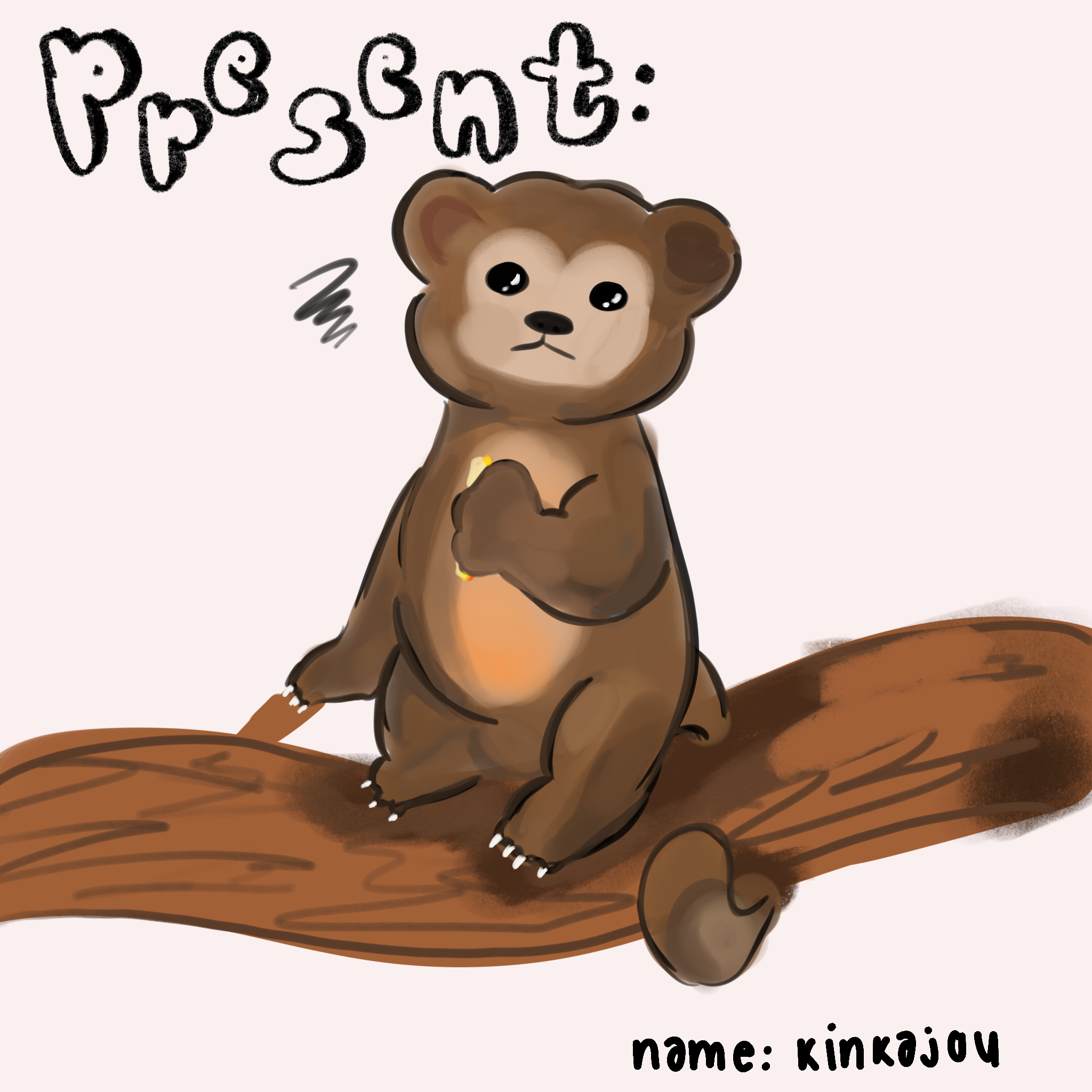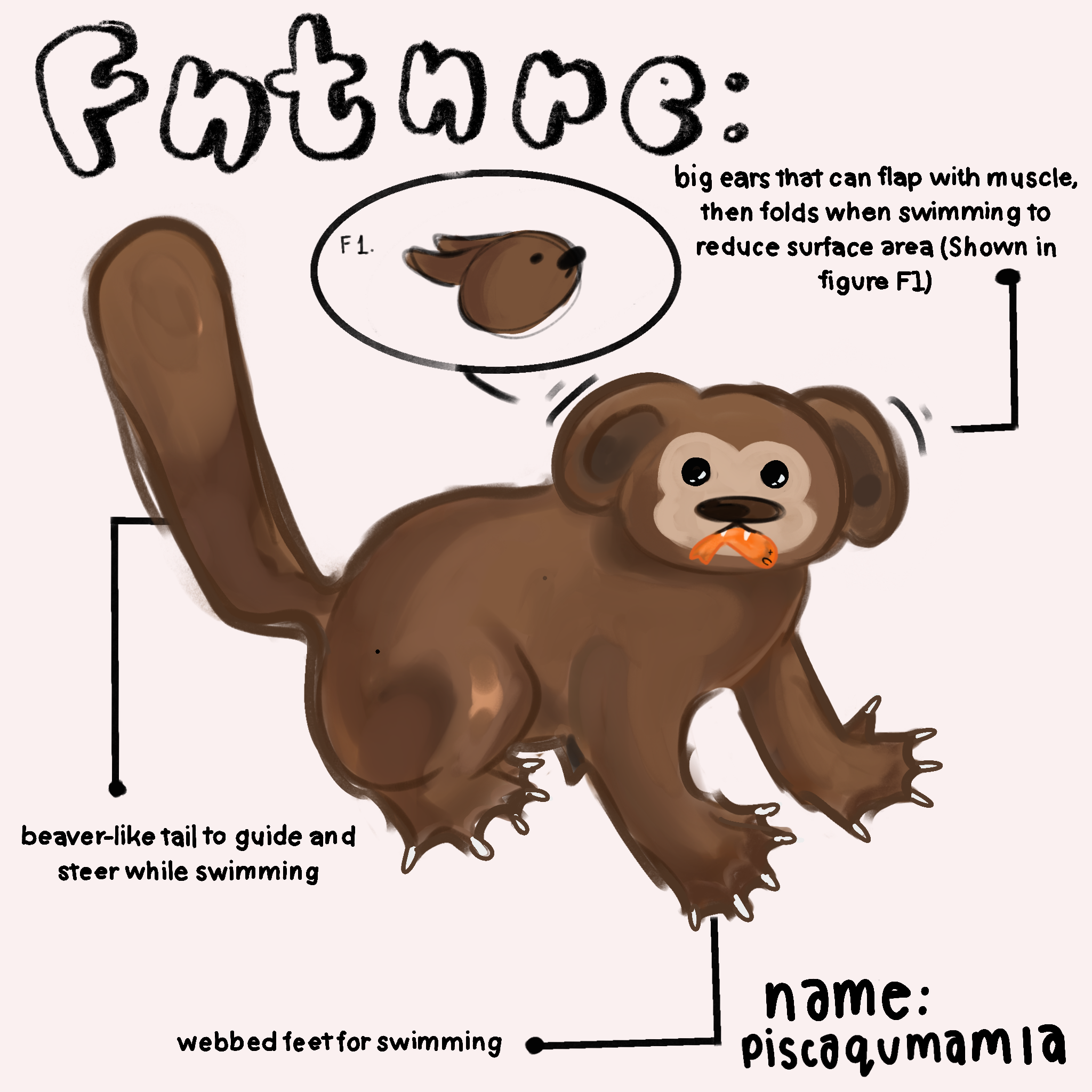Currently, Kinkajous have small webbed fingers and dense wool fur which are early characteristics of potential aquatic adaptations. Climate change is a threat to Kinkajous' diet as it increases rain which bug availability will decrease because bugs dislike rain. Rain will lead to diluted nectar, leading Kinkajous to find other fruits that are not rich in protein. Alternatively, they’ll go to vast water reservoirs, relying on protein-rich fish as their diet. This transition will allow an evolution of beaver-like tails and webbed feet for swimming. They will have bigger ears to flop like a fan in cases of intense heat. The ears also will fold in the water to glide through the waters. Nose width increases as temperature increases, proven by studies/observations. Showing possibly Kinkajous may have larger noses. Future Kinkajous will mimic the whales' evolution, however, they will remain as partial mammals instead of being fully aquatic. (Name: Piscaqumamla)
Contact us
Thank you for your interest in contacting Future Engineers. We look forward to connecting with you!
General Inquiries
support@futureengineers.orgSponsorship Inquiries
sponsor@futureengineers.org

